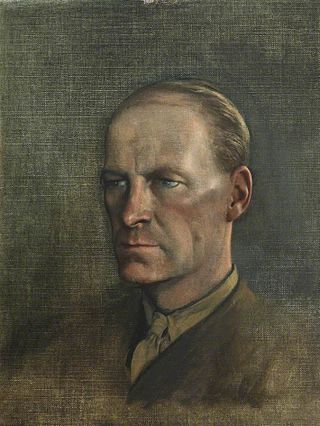
Anthropology is the scientific study of humanity, concerned with human behavior, human biology, cultures, societies, and linguistics, in both the present and past, including archaic humans. Social anthropology studies patterns of behavior, while cultural anthropology studies cultural meaning, including norms and values. The term sociocultural anthropology is commonly used today. Linguistic anthropology studies how language influences social life. Biological or physical anthropology studies the biological development of humans.

Cultural anthropology is a branch of anthropology focused on the study of cultural variation among humans. It is in contrast to social anthropology, which perceives cultural variation as a subset of a posited anthropological constant. The term sociocultural anthropology includes both cultural and social anthropology traditions.
In anthropology, folkloristics, linguistics, and the social and behavioral sciences, emic and etic refer to two kinds of field research done and viewpoints obtained.

Ethnography is a branch of anthropology and the systematic study of individual cultures. Ethnography explores cultural phenomena from the point of view of the subject of the study. Ethnography is also a type of social research that involves examining the behavior of the participants in a given social situation and understanding the group members' own interpretation of such behavior.
Anthropology of religion is the study of religion in relation to other social institutions, and the comparison of religious beliefs and practices across cultures. The anthropology of religion, as a field, overlaps with but is distinct from the field of Religious Studies. The history of anthropology of religion is a history of striving to understand how other people view and navigate the world. This history involves deciding what religion is, what it does, and how it functions. Today, one of the main concerns of anthropologists of religion is defining religion, which is a theoretical undertaking in and of itself. Scholars such as Edward Tylor, Emile Durkheim, E.E. Evans Pritchard, Mary Douglas, Victor Turner, Clifford Geertz, and Talal Asad have all grappled with defining and characterizing religion anthropologically.
Participant observation is one type of data collection method by practitioner-scholars typically used in qualitative research and ethnography. This type of methodology is employed in many disciplines, particularly anthropology, sociology, communication studies, human geography, and social psychology. Its aim is to gain a close and intimate familiarity with a given group of individuals and their practices through an intensive involvement with people in their cultural environment, usually over an extended period of time.

Clifford James Geertz was an American anthropologist who is remembered mostly for his strong support for and influence on the practice of symbolic anthropology and who was considered "for three decades... the single most influential cultural anthropologist in the United States." He served until his death as professor emeritus at the Institute for Advanced Study, Princeton.

Gilbert Ryle was a British philosopher, principally known for his critique of Cartesian dualism, for which he coined the phrase "ghost in the machine." Some of Ryle's ideas in philosophy of mind have been called behaviourist. In his best-known book, The Concept of Mind (1949), he writes that the "general trend of this book will undoubtedly, and harmlessly, be stigmatised as 'behaviourist'." Having studied the philosophers Bernard Bolzano, Franz Brentano, Alexius Meinong, Edmund Husserl, and Martin Heidegger, Ryle suggested that the book instead "could be described as a sustained essay in phenomenology, if you are at home with that label."
Symbolic anthropology or, more broadly, symbolic and interpretive anthropology, is the study of cultural symbols and how those symbols can be used to gain a better understanding of a particular society. According to Clifford Geertz, "[b]elieving, with Max Weber, that man is an animal suspended in webs of significance he himself has spun, I take culture to be those webs, and the analysis of it to be therefore not an experimental science in search of law but an interpretive one in search of meaning". In theory, symbolic anthropology assumes that culture lies within the basis of the individuals’ interpretation of their surrounding environment, and that it does not in fact exist beyond the individuals themselves. Furthermore, the meaning assigned to people's behavior is molded by their culturally established symbols. Symbolic anthropology aims to thoroughly understand the way meanings are assigned by individuals to certain things, leading then to a cultural expression. There are two majorly recognized approaches to the interpretation of symbolic anthropology, the interpretive approach, and the symbolic approach. Both approaches are products of different figures, Clifford Geertz (interpretive) and Victor Turner (symbolic). There is also another key figure in symbolic anthropology, David M. Schneider, who does not particularly fall into either of the schools of thought. Symbolic anthropology follows a literary basis instead of an empirical one meaning there is less of a concern with objects of science such as mathematics or logic, instead of focusing on tools like psychology and literature. That is not to say fieldwork is not done in symbolic anthropology, but the research interpretation is assessed in a more ideological basis.
Online ethnography is an online research method that adapts ethnographic methods to the study of the communities and cultures created through computer-mediated social interaction. As modifications of the term ethnography, cyber-ethnography, online ethnography and virtual ethnography designate particular variations regarding the conduct of online fieldwork that adapts ethnographic methodology. There is no canonical approach to cyber-ethnography that prescribes how ethnography is adapted to the online setting. Instead individual researchers are left to specify their own adaptations. Netnography is another form of online ethnography or cyber-ethnography with more specific sets of guidelines and rules, and a common multidisciplinary base of literature and scholars. This article is not about a particular neologism, but the general application of ethnographic methods to online fieldwork as practiced by anthropologists, sociologists, and other scholars.
In epistemology, and more specifically, the sociology of knowledge, reflexivity refers to circular relationships between cause and effect, especially as embedded in human belief structures. A reflexive relationship is multi-directional when the causes and the effects affect the reflexive agent in a layered or complex sociological relationship. The complexity of this relationship can be furthered when epistemology includes religion.

Field research, field studies, or fieldwork is the collection of raw data outside a laboratory, library, or workplace setting. The approaches and methods used in field research vary across disciplines. For example, biologists who conduct field research may simply observe animals interacting with their environments, whereas social scientists conducting field research may interview or observe people in their natural environments to learn their languages, folklore, and social structures.
Cognitive anthropology is an approach within cultural anthropology and biological anthropology in which scholars seek to explain patterns of shared knowledge, cultural innovation, and transmission over time and space using the methods and theories of the cognitive sciences often through close collaboration with historians, ethnographers, archaeologists, linguists, musicologists, and other specialists engaged in the description and interpretation of cultural forms. Cognitive anthropology is concerned with what people from different groups know and how that implicit knowledge, in the sense of what they think subconsciously, changes the way people perceive and relate to the world around them.

Sociological, psychological, and anthropological theories about religion generally attempt to explain the origin and function of religion. These theories define what they present as universal characteristics of religious belief and practice.
Postmodern theory (PM) in anthropology originated in the 1960s, along with the literary postmodern movement in general. Anthropologists working in this vein of inquiry seek to dissect, interpret and write cultural critiques.
"Deep Play: Notes on the Balinese Cockfight" is an essay by the anthropologist Clifford Geertz included in the book The Interpretation of Cultures (1973). Considered Geertz's most seminal work, it addresses the symbolism and social dynamics of cockfighting (sabungan) in Balinese culture. It is an important example of Geertz's use of "thick description" as an anthropological approach.
Systems theory in anthropology is an interdisciplinary, non-representative, non-referential, and non-Cartesian approach that brings together natural and social sciences to understand society in its complexity. The basic idea of a system theory in social science is to solve the classical problem of duality; mind-body, subject-object, form-content, signifier-signified, and structure-agency. Systems theory suggests that instead of creating closed categories into binaries (subject-object), the system should stay open so as to allow free flow of process and interactions. In this way the binaries are dissolved.
Ethnoscience has been defined as an attempt "to reconstitute what serves as science for others, their practices of looking after themselves and their bodies, their botanical knowledge, but also their forms of classification, of making connections, etc.".

The Interpretation of Cultures: Selected Essays is a 1973 book by the American anthropologist Clifford Geertz. The book is a foundational text in cultural anthropology and represents Geertz’s vision of how culture should be studied and understood. The essays collectively argue for a new approach to anthropology, one that emphasizes the interpretive analysis of culture, which Geertz describes as “webs of significance” spun by humans themselves. The book was listed in the Times Literary Supplement as one of the 100 most important publications since World War Two.
This bibliography of anthropology lists some notable publications in the field of anthropology, including its various subfields. It is not comprehensive and continues to be developed. It also includes a number of works that are not by anthropologists but are relevant to the field, such as literary theory, sociology, psychology, and philosophical anthropology.








